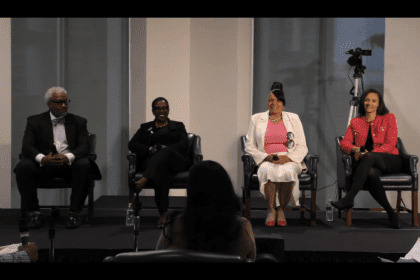 Boca Raton, Florida (CNN) — As President Barack Obama and Republican nomineeget ready to face off in their final debate, a new poll in the crucial battleground state of Ohio indicates a close contest in the race for the Buckeye State’s 18 electoral votes.According to a Quinnipiac University/CBS News survey released Monday morning, 50% of likely voters in Ohio say they support the president, with 45% backing Romney. Obama’s five point lead is right at the edge of the survey’s sampling error. It’s also half the 10-point 53%-43% lead he held over the former Massachusetts governor in a Quinnipiac poll conducted late last month, prior to the debates.”The good news for Gov. Romney is that he has sliced President Obama’s lead in Ohio in half in the last month,” said Peter A. Brown, assistant director of the Quinnipiac University Polling Institute. “The bad news for Romney, and the good news for Obama, is that no Republican has ever won the White House without carrying Ohio and the challenger is running out of time to make up the remaining difference.”
Boca Raton, Florida (CNN) — As President Barack Obama and Republican nomineeget ready to face off in their final debate, a new poll in the crucial battleground state of Ohio indicates a close contest in the race for the Buckeye State’s 18 electoral votes.According to a Quinnipiac University/CBS News survey released Monday morning, 50% of likely voters in Ohio say they support the president, with 45% backing Romney. Obama’s five point lead is right at the edge of the survey’s sampling error. It’s also half the 10-point 53%-43% lead he held over the former Massachusetts governor in a Quinnipiac poll conducted late last month, prior to the debates.”The good news for Gov. Romney is that he has sliced President Obama’s lead in Ohio in half in the last month,” said Peter A. Brown, assistant director of the Quinnipiac University Polling Institute. “The bad news for Romney, and the good news for Obama, is that no Republican has ever won the White House without carrying Ohio and the challenger is running out of time to make up the remaining difference.”
A Fox News Poll released Friday, which along with the Quinnipiac survey, was also conducted entirely after last Tuesday’s second presidential debate, indicated the president with a narrower three-point 46%-43% advantage among likely voters.
According to the Quinnipiac poll, there’s a wide gender gap, with Obama leading 55%-40% among women voters, with Romney ahead 51%-44% among men. Romney has a seven point 51%-44% advantage among white voters while the president is winning over nine in ten black voters. Those with college degrees are divided between the two candidates, while those without degrees are backing Obama 52%-43%.
“President Obama won 46 percent of the white vote in Ohio in 2008 when he carried the state by five points. Romney probably needs to hold Mr. Obama to less than 40 percent of the white vote if he is to win Ohio, and he has a ways to go at this point,” added Brown.
The survey also indicates an income divide, with people making less than $30,000 a year supporting Obama by a nearly two to one advantage and those making more than $100,000 per year backing Romney by a 53%-45% margin. The GOP challenger also has a 49%-42% advantage among independent voters.
According to the poll, one in five likely voters say they’ve already cast a ballot. Of those early voters, Obama leads 54%-39%.
Buckeye voters are more optimistic about the economy in their state. They’re split on whether the national economy is getting better, but by a 46%-42% margin, they say things are improving in Ohio. Buckeye voter are tied at 48% when asked which candidate would do a better job on the economy.
Ohio and two other swing states–Florida and Virginia–have been receiving a lion’s share of attention from the presidential campaigns, ranging from candidate visits to ad spending, during the general election.
The poll also indicates Democratic Sen. Sherrod Brown leading State Treasurer Josh Mandel, the Republican nominee, the state’s U.S. Senate contest.
The Quinnipiac University poll was conducted October 17-20, with 1,548 likely voters in Ohio. The survey’s overall sampling error for likely voters is plus or minus 2.5 percentage points.
By Paul Steinhauser
CNN Political Editor
















